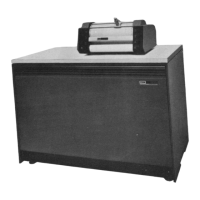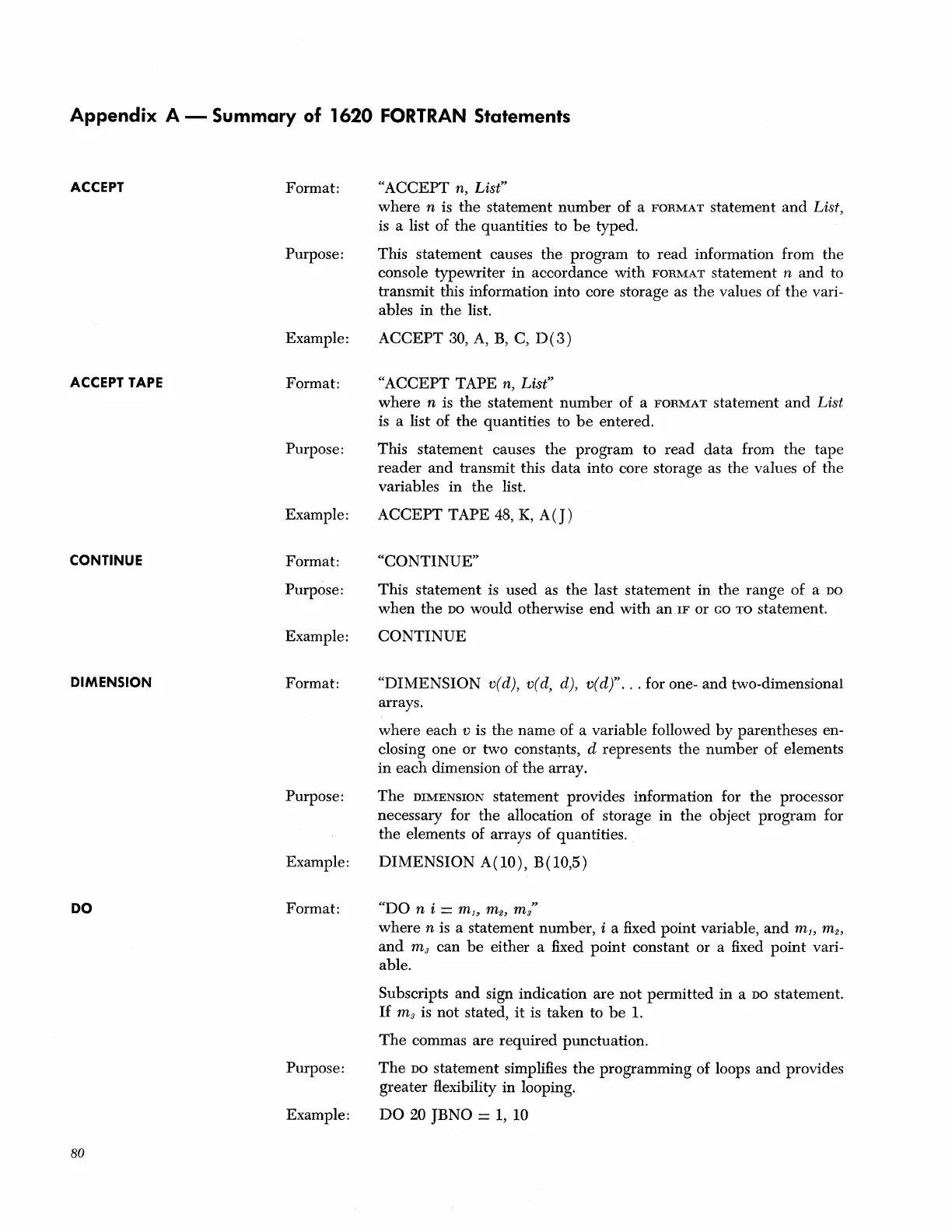Appendix A - Summary of 1620 FORTRAN Statements
ACCEPT
Format:
Purpose:
Example:
ACCEPT TAPE
Format:
Purpose:
Example:
CONTINUE
Format:
Purpose:
Example:
DIMENSION
Format:
Purpose:
Example:
DO
Format:
Purpose:
Example:
80
«ACCEPT n, List"
where
n is
the
statement
number
of a
FORMAT
statement
and
List,
is a list of the quantities to
be
typed.
This statement causes
the
program to
read
information from the
console typewriter in accordance
with
FORMAT
statement n
and
to
transmit this information into core storage as the values
of
the
vari-
ables
in
the list.
ACCEPT
30,
A,
B,
C, D ( 3 )
«ACCEPT TAPE n, List"
where
n is
the
statement
number
of a
FORMAT
statement
and
List
is a list of the quantities to
be
entered.
This statement causes
the
program to
read
data
from
the
tape
reader
and
transmit this
data
into core storage as the values of the
variables in the list.
ACCEPT
TAPE 48,
K,
A(J)
«CONTINUE"
This statement
is
used as
the
last statement in the range
of
a DO
when
the
DO would otherwise
end
with
an
IF
or GO
TO
statement.
CONTINUE
«DIMENSION
v(d), v(d, d), v(d)" .
..
for one-
and
two-dimensional
arrays.
where
each
v is the
name
of a variable followed
by
parentheses en-
closing one or two consta:p.ts, d represents
the
number
of elements
in
each
dimension of
the
array.
The
DIMENSION
statement provides information for
the
processor
necessary for the allocation of storage
in
the
object program for
the
elements of arrays
of
quantities.
DIMENSION
A(10),
B(10,5)
«DO n i = m}, m
z
,
mt
where
n is a statement number, i a fixed point variable,
and
mJ, m
z
,
and
ms can
be
either a fixed
point
constant or a fixed
point
vari-
able.
Subscripts
and
sign indication are
not
permitted
in a DO statement.
If
ms is
not
stated,
it
is taken to
be
1.
The
commas are
required
punctuation.
The
DO statement simplifies
the
programming of loops
and
provides
greater flexibility in looping.
DO
20 JBNO =
1,
10

